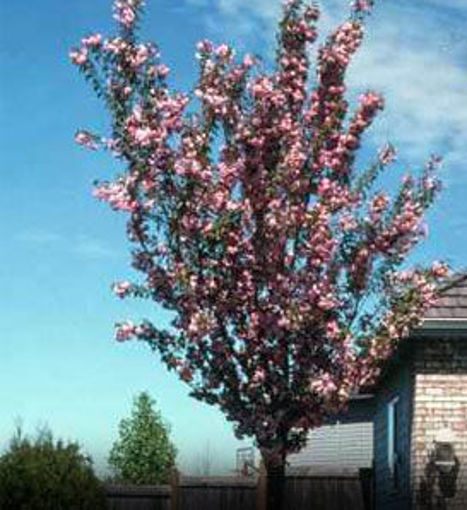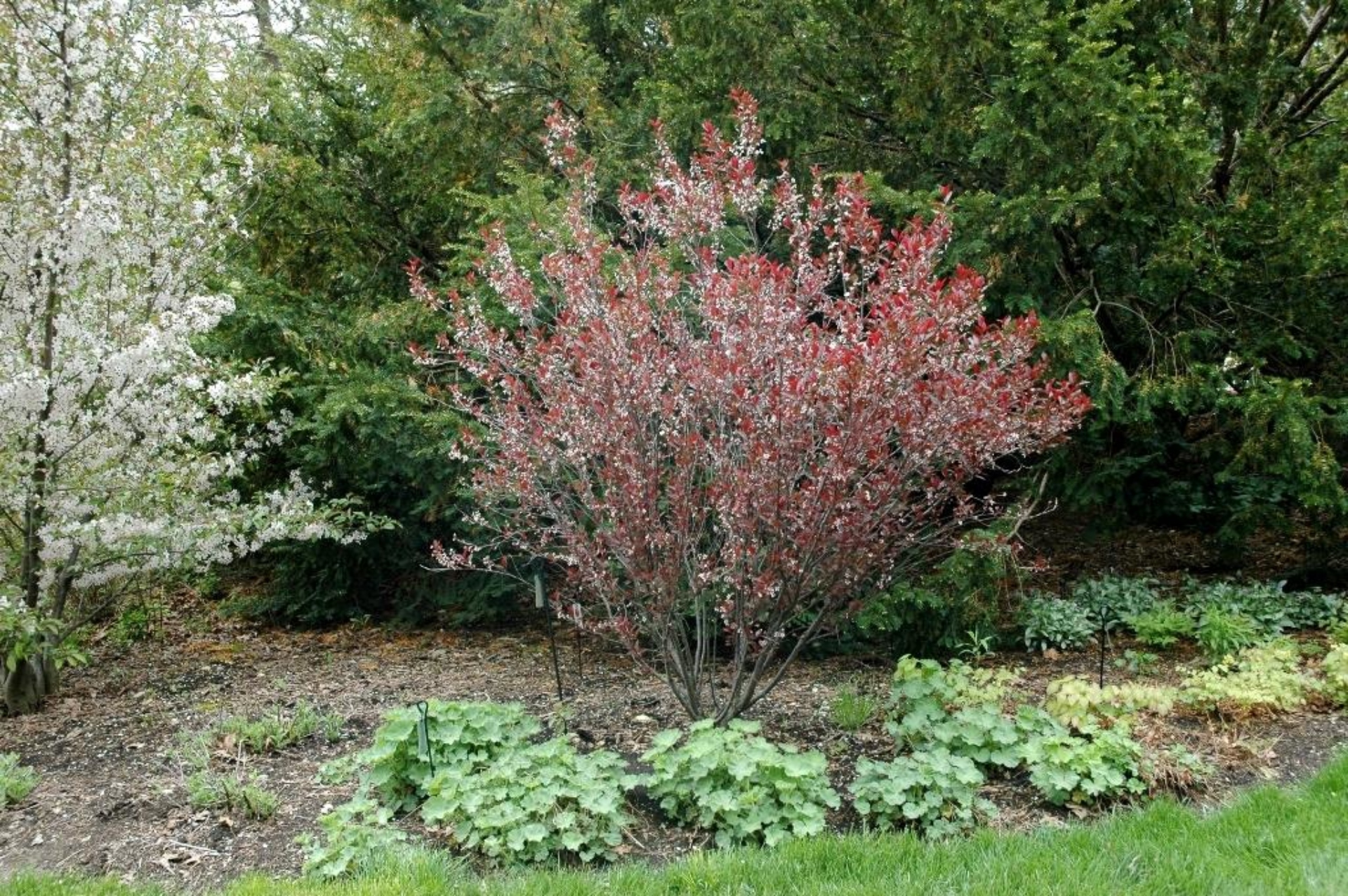Purple Leaf Sand Cherry: The Stunning Tree That Will Add Color To Your Landscape
Title: Purple Leaf Sand Cherry: The Stunning Tree That Will Add Color to Your Landscape
Introduction:
If you're looking for a stunning tree to add color to your landscape, look no further than the purple leaf sand cherry. This beautiful tree is known for its vibrant purple foliage, which can add a touch of elegance to any garden. Purple leaf sand cherries are also relatively easy to care for, making them a great choice for even the most novice gardeners.
Main Content:
What is a purple leaf sand cherry?
A purple leaf sand cherry is a hybrid tree that is a cross between Prunus cerasifera (purple leaf plum) and Prunus pumila (sand cherry). These trees are native to Asia and North America, and they are hardy in USDA zones 3-8. Purple leaf sand cherries typically grow 6-10 feet tall and 5-8 feet wide, and they have a rounded, spreading growth habit.
What are the benefits of purple leaf sand cherries?
There are many benefits to planting a purple leaf sand cherry in your landscape. These trees are:
- Easy to care for: Purple leaf sand cherries are relatively low-maintenance trees. They can tolerate a wide range of soil conditions, and they are drought-tolerant once established.
- Beautiful foliage: The purple foliage of purple leaf sand cherries is their most striking feature. The leaves are a deep purple color in the spring and summer, and they turn a vibrant red in the fall.
- Attract pollinators: The fragrant flowers of purple leaf sand cherries attract bees, butterflies, and other pollinators. These trees can help to improve the pollination of other plants in your garden.
- Edible fruit: The fruit of purple leaf sand cherries is small and sour, but it can be used to make jams, jellies, and pies.
How to plant a purple leaf sand cherry
Purple leaf sand cherries are best planted in the spring or fall. When planting, choose a location that receives full sun. The soil should be well-drained, but it should also be able to retain some moisture.
To plant a purple leaf sand cherry, dig a hole that is twice as wide and as deep as the root ball. Place the tree in the hole and backfill with soil. Water the tree thoroughly and mulch around the base.
How to care for a purple leaf sand cherry
Once your purple leaf sand cherry is established, it is relatively low-maintenance. Water the tree regularly during the first year, and then water deeply as needed during the summer months. Fertilize the tree in the spring with a balanced fertilizer.
Prune your purple leaf sand cherry in the spring to remove dead, diseased, or damaged branches. You can also prune the tree to shape it or to control its size.
Conclusion
Purple leaf sand cherries are stunning trees that can add a touch of elegance to any garden. These trees are relatively easy to care for, and they can provide beauty and benefits for many years to come.
Purple leaf sand cherry is a beautiful and versatile tree that can add a touch of color to any landscape. It is easy to care for and can tolerate a variety of conditions. If you are interested in learning more about purple leaf sand cherry, I recommend visiting Home Gardening. This website is a great resource for information about the tree, including its history, care, and planting tips.
FAQ of purple leaf sand cherry
Q: What are the benefits of planting purple leaf sand cherry?
A: Purple leaf sand cherry is a beautiful and versatile shrub that can add a touch of color to any garden. It is also relatively easy to care for, making it a good choice for even novice gardeners.
Some of the benefits of planting purple leaf sand cherry include:
- Beautiful foliage: The leaves of purple leaf sand cherry are a deep purple color that can provide a splash of color in the garden.
- Early spring blooms: Purple leaf sand cherry blooms in early spring, providing a welcome burst of color after a long winter.
- Attracts birds: The small fruits of purple leaf sand cherry are a favorite food of birds, making it a great way to attract wildlife to your garden.
- Drought tolerant: Purple leaf sand cherry is drought tolerant, making it a good choice for gardens in hot, dry climates.
Q: How do I care for purple leaf sand cherry?
A: Purple leaf sand cherry is relatively easy to care for. It prefers full sun to partial shade and well-drained soil. It is also drought tolerant, but it will benefit from regular watering during the summer months.
Here are some tips for caring for purple leaf sand cherry:
- Water regularly: During the summer months, water purple leaf sand cherry deeply once a week.
- Fertilize in spring: Fertilize purple leaf sand cherry in the spring with a balanced fertilizer.
- Prune in late winter: Prune purple leaf sand cherry in late winter to remove dead or diseased branches and to shape the shrub.
Q: What are some common problems with purple leaf sand cherry?
A: Purple leaf sand cherry is susceptible to a few common problems, including:
- Pests: Purple leaf sand cherry can be susceptible to pests such as Japanese beetles, aphids, and scale.
- Diseases: Purple leaf sand cherry can be susceptible to diseases such as leaf spot and powdery mildew.
- Winter damage: Purple leaf sand cherry can be damaged by cold winters, especially if it is not planted in a protected location.
Here are some tips to prevent or control these problems:
- Inspect plants regularly: Inspect purple leaf sand cherry regularly for signs of pests or diseases.
- Control pests: If you see pests on your purple leaf sand cherry, you can control them with insecticidal soap, neem oil, or horticultural oil.
- Control diseases: If you see diseases on your purple leaf sand cherry, you can control them with fungicide.
- Protect from winter damage: If you live in a cold climate, protect your purple leaf sand cherry from winter damage by mulching it with a layer of straw or leaves.
Image of purple leaf sand cherry
- Purple leaf sand cherry tree in full bloom.
- Close-up of purple leaf sand cherry flowers.
- Purple leaf sand cherry tree in fall foliage.

- Purple leaf sand cherry shrub in a garden.
- Purple leaf sand cherry tree in a pot.
- Purple leaf sand cherry tree in a forest.

- A bird sitting on a purple leaf sand cherry branch.

- A squirrel eating the fruits of a purple leaf sand cherry tree.

- A child playing under a purple leaf sand cherry tree.

- A landscape of a purple leaf sand cherry tree in a field.

Post a Comment for "Purple Leaf Sand Cherry: The Stunning Tree That Will Add Color To Your Landscape"